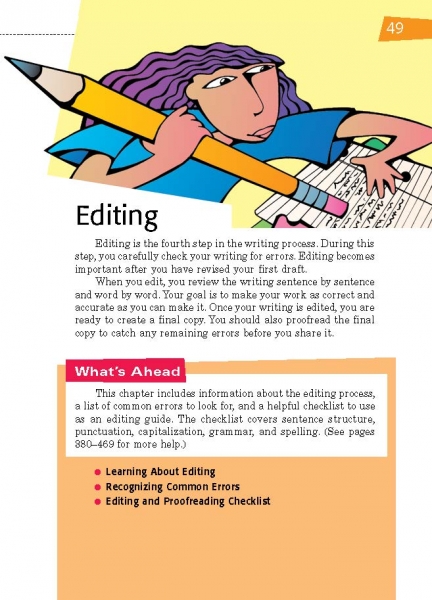Page 049 from

Start-Up Activity
Have your students read page 49 silently; then lead a discussion about editing and proofreading. Ask students why it is important for their writing to be correct. (Correct writing gets a message across clearly; it ensures the ideas are easy to understand.) Discuss how the editing step allows writers to fine-tune their writing, preparing it for publication.
Emphasize that editing becomes important after all of the major changes to the content of the writing (ideas, organization, voice, etc.) have been made. Refer students to page 13 in the handbook so they can see what editing looks like, as opposed to revising, which is shown on page 12.
Think About It
“Today, English is believed to have the largest lexicon [the most words] of any modern language—and it’s still evolving. Is there any wonder the rules are a little screwy?”
—Patricia T. O’Conner

Start-Up Activity
Have your students read page 49 silently; then lead a discussion about editing and proofreading. Ask students why it is important for their writing to be correct. (Correct writing gets a message across clearly; it ensures the ideas are easy to understand.) Discuss how the editing step allows writers to fine-tune their writing, preparing it for publication.
Emphasize that editing becomes important after all of the major changes to the content of the writing (ideas, organization, voice, etc.) have been made. Refer students to page 13 in the handbook so they can see what editing looks like, as opposed to revising, which is shown on page 12.
Think About It
“Today, English is believed to have the largest lexicon [the most words] of any modern language—and it’s still evolving. Is there any wonder the rules are a little screwy?”
—Patricia T. O’Conner


